Brake grease — What Grease to Use on Brakes
Which brake grease to use and where to apply it
When you apply your brakes, parts move. All those moving parts require some type of lubricant to ease movement and prevent friction and noise. Many people are confused over which brake grease to use and where to apply it when doing during a brake job. Here’s the scoop.
Clean these brake caliper and abutment areas first
The brake caliper bracket and brake abutment areas rust over time. Rust expands as it forms and that expansion can reduce the clearances between brake pads and the abutment areas. Rust expansion is what causes brake pads to 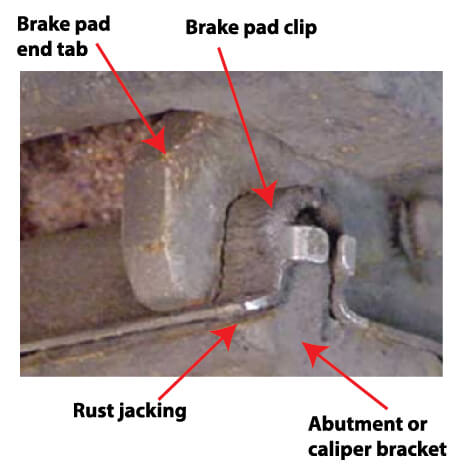 seize and wear unevenly.
seize and wear unevenly.
So start your brake job by cleaning the brake caliper bracket and abutment areas. Use a wire brush to remove the rust. Wipe the area with a dry rag and then apply a thin film of high temperature synthetic brake grease to those areas before you install the anti-rattle clips. The synthetic brake grease prevents rust from forming and won’t damage rubber parts.
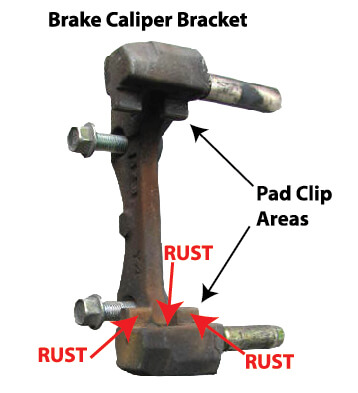
Pay special attention to the brake pad clip areas. Remove all rust from those areas and apply a light film of brake lubricant to prevent future corrosion and pad binding
Then install the new brake pad clips by pressing them into the caliper bracket depressions.
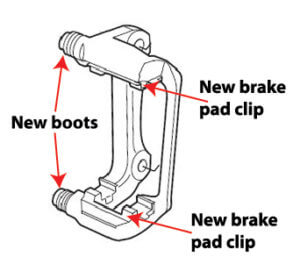
Apply brake lubricant to the cleaned pad clip areas to reduce rust jacking. Then install brake pad clips and new boots
Clean the caliper slide pins and sockets
Brakes generate a tremendous amount of heat and that breaks down the grease and rubber components over time. Clean the caliper slide pins and bores.
Slide the new rubber caliper boots onto the slide pins and apply and apply synthetic high temperature brake grease, NOT ANTI-SEIZE. Then snap the boots over the corresponding anchor points. Use high temperature synthetic brake grease for these areas because it’s compatible with rubber and metal parts.
Clean the face of the brake caliper piston and the caliper “fingers”
Once those areas are clean, apply grease.
Apply a thin coating of synthetic brake grease to the caliper piston face and the brake pad backing plate. Personally, I use synthetic on the piston face and
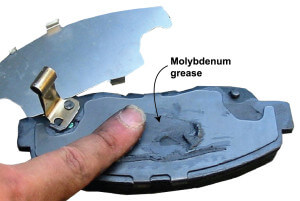
Apply moly grease to back of brake pad
molybdenum disulfide (“moly” or MOS2) grease to the caliper fingers; the area where the outboard pad contacts the caliper body. Moly grease will withstand the extreme squeezing pressure during brake application and dramatically reduces brake noise and vibration.
NOTE: Never use anti-seize on caliper slide pins. It’s not approved for brakes and it’s NOT A LUBRICANT.
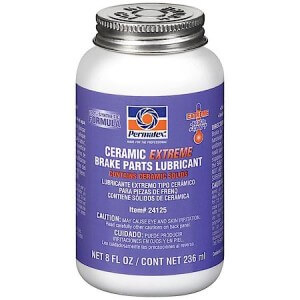
High temperature ceramic brake grease
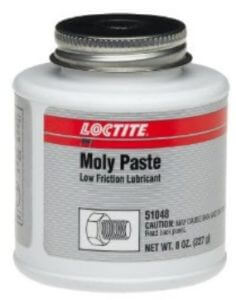
Moly grease
I recommend Sil-Glyde Silicone Brake Lubricant or Permatex Brake Lubricants
©, 2017 Rick Muscoplat
Posted on by Rick Muscoplat
